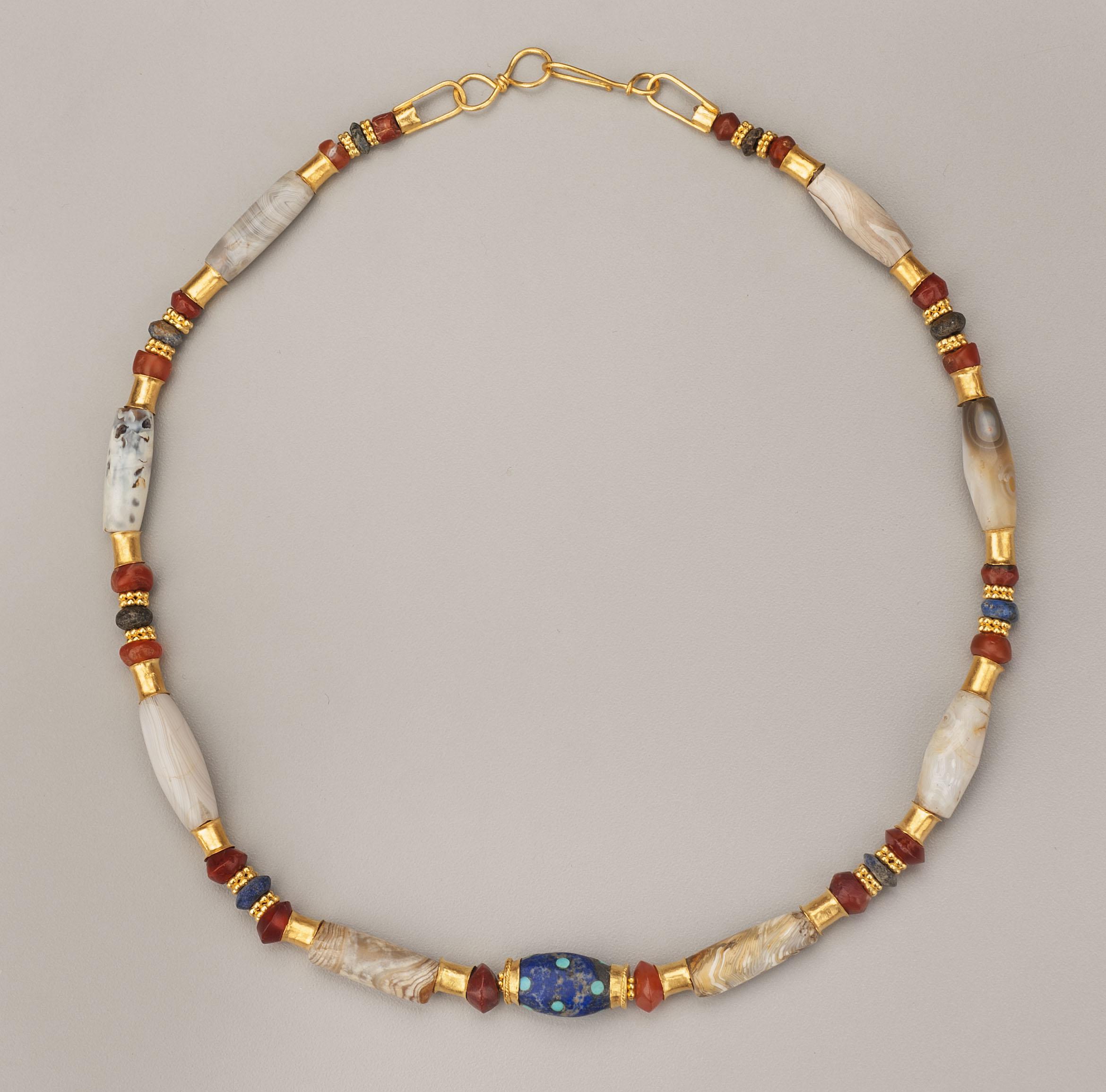Ancient Chalcedony Barrel Beads, Lapis, Carnelian, and Gold with Lapis Center Bead Inlaid with Turquoise
Collection:
Agate
Material:
Agate, Lapis Lazuli, Carnelian, Turquoise Inlays, 20k gold
Size:
The necklace is 19 3/8 inches (49.2 cm) in length. The necklace weighs 47.5 gm.
Price:
$7,350.00
A necklace of eight ancient agate barrel beads faced with sixteen flared gold tubes and alternating with eight lapis lazuli short bicone beads faced with pairs of two layer gold granulated ring beads; eighteen carnelian bicones and short barrel beads separate these granulated gold beads from the flared gold tubes. At the center of the necklace is a lapis lazuli bead with gold end caps. There are twelve turquoise circular inlays set in three groups of four around the bead at the center and the ends. The center ring of inlays is off set from the two outer ones. The lapis bead with the gold caps is 2.05 cm in length. The width at the center is 1.08 cm and the end widths are 7 mm. The diameters of the ends of the gold caps is 7.6 mm. The ends are bordered with very finely twisted flat gold wires. There is a pair of small granulated gold ring beads that faces the gold caps. Two carnelian short bicone beads face these. They are 5 mm in length and 8 mm in diameter. The drill hole diameter of the red jasper is 2mm. There are two more pairs of similar carnelian bicones. There are four smaller smaller bicones, (L-3.5 mm, W- 6 mm)- the remaining carnelian beads are short barrels. The largest of the lapis lazuli bicones is 3 mm in length and 7.5 mm in width; they graduate down to 2.25 mm in length and 5.5 mm in width. The very large drill holes of these tapered agate barrel beads attests to their antiquity. The center lapis lazuli bead is a restoration of a bead which had suffered some unfortunate damage to one of the ends. After filling the broken end with epoxy resin so it could be capped with a gold end piece, we decided to address the pattern of twelve holes. These were almost certainly filled with something, the holes would not have been left empty as there are intact composite beads with inlays. Most likely the holes were filled with a white substance, gypsum or steatite, which has not survived. We made the decision to fill them with inlays of turquoise which we felt made a more pleasing contrast.
